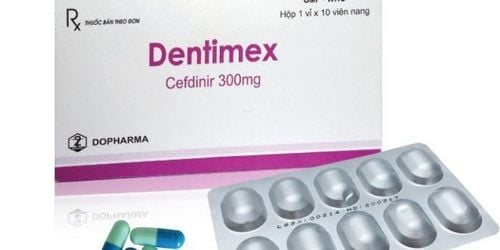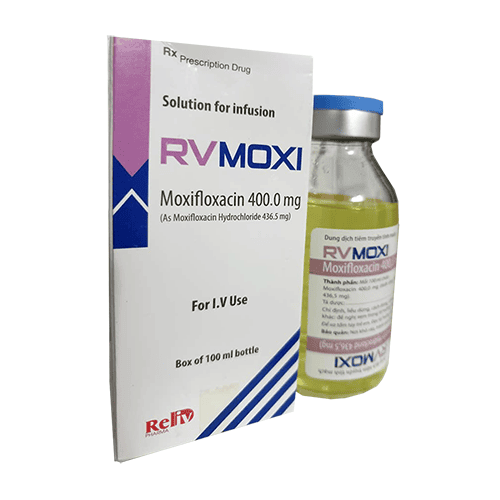This is an automatically translated article.
Xenleta is a drug that is used only with a doctor's prescription. When deciding to use it, the risks of taking Xenleta must be weighed against the benefits it offers. So for Xenleta, what should be considered before using it?
1. What does Xenleta do?
What does Xenleta do? Xenleta is a pleuromutilin antibacterial agent indicated for the treatment of adults with community-acquired bacterial pneumonia (CABP) caused by the following susceptible microorganisms: Streptococcus pneumoniae, Staphylococcus aureus (faeces) susceptible to methicillin), Haemophilus influenzae, Legionella pneumophila, Mycoplasma pneumoniae and Chlamydophila pneumonia. The main active ingredient of Xenleta is Lefamulin, which is a member of the pleuromutilin class of antibiotics that works by killing bacteria or stopping their growth. However, Xenleta will not work for colds, flu, or other viral infections.
Indications: Lefamulin is used to treat community-acquired bacterial pneumonia (CABP). To reduce the development of drug-resistant bacteria and maintain the effectiveness of Xenleta and other antibacterial medicines, Xenleta should only be used to treat or prevent infections that are proven or suspected. caused by susceptible bacteria.
For the highest-risk patients, efficacy against typical and atypical CABP pathogens was seen in only 5 days of oral Xenleta treatment. Xenleta is available as Lefamulin 600 mg tablets.
2. Instructions for using Xenleta properly
Take Xenleta only as directed by your doctor. Do not take Xenleta more, take it more often, and take Xenleta for longer than directed. Patients should swallow Xenleta tablets whole with water, do not break, crush or split. Take Xenleta at least 1 hour before or 2 hours after a meal. Continue using Xenleta for the full time of treatment, even if the patient starts to feel better after a few days. If a patient stops taking Xenleta too soon, their infection may not go away.
Dosage of Xenleta will be different for different patients, usual dose for community-acquired bacterial pneumonia:
Adults: 600 milligrams (mg) every 12 hours, continuous use in 5 days. Children: the use and dosage of Xenleta must be determined by a specialist. Note: The above dosage is for reference only, patients need to take the drug according to the instructions and prescription of the doctor to ensure guarantee the highest efficiency.
3. Notes when using Xenleta
It is very important when treating with Xenleta that the doctor check the patient's progress at regular visits to make sure that Xenleta is working properly. Blood and urine tests may be needed to check for side effects of Xenleta.
Using Xenleta while you are pregnant can harm your unborn baby. Use an effective form of birth control to prevent pregnancy during treatment and for at least 2 days after the last dose of Xenleta. If you think you may be pregnant while using Xenleta, tell your doctor right away.
Do not use Xenleta if the patient is also taking Erythromycin, medicine for heart rhythm problems (e.g. amiodarone, quinidine, procainamide, sotalol...), medication for mental illness (eg: pimozide...), or tricyclic antidepressants. Using these medicines together with Xenleta can cause unwanted serious side effects.
Contact the doctor immediately if the patient has any changes to his or her heart rate. The patient may feel dizzy or faint, and have a fast, pounding, or irregular heartbeat. Make sure the doctor knows if the patient or anyone in the family has ever had a heart rhythm problem such as QT prolongation.
Lefamulin can cause diarrhea which in some cases can be serious. It can even happen 2 months or more after you stop taking Xenleta . Do not take any medicine to treat diarrhea without first checking with your doctor. Diarrhea medications can make diarrhea worse or last longer. If the patient has any questions about this or if mild diarrhea persists or gets worse, see the treating physician.
4. Xenleta side effects
Along with the necessary effects, Xenleta may cause some unwanted effects. Although not all of these side effects are possible, if they do occur most patients need medical attention.
Less common side effects of Xenleta:
Seizures; Decreased urine output; Dry mouth ; Increased thirst; Irregular heartbeat; Loss of appetite; Mood swings; Muscle pain or cramps; Nausea or vomiting; Numbness, tingling in the hands, feet, lips; Shortness of breath; Unusual fatigue or weakness. Side effects of unknown incidence:
Abdominal pain or upset stomach; Chest pain or discomfort; Faint; Fever; Irregular or slow heartbeat; severe cramps, stomach or stomach pain; Watery and severe diarrhea, which may also be bloody. Some side effects of Xenleta can occur that usually do not require medical attention. These side effects may go away during treatment as the body adapts to Xenleta. In addition, the healthcare professional can tell the patient about ways to prevent or reduce some of these side effects. Xenleta is a pleuromutilin antibacterial agent indicated for the treatment of adults with community-acquired bacterial pneumonia (CABP) caused by susceptible microorganisms. To ensure effective use, avoid interactions or unwanted side effects, patients need to carefully read the instructions for use, and strictly follow the instructions of the doctor, professional pharmacist. When there are abnormal signs, it is necessary to report immediately to a doctor or to a medical center for timely examination and support.
Follow Vinmec International General Hospital website to get more health, nutrition and beauty information to protect the health of yourself and your loved ones in your family.
Please dial HOTLINE for more information or register for an appointment HERE. Download MyVinmec app to make appointments faster and to manage your bookings easily.
Reference sources: xenleta.com, drugs.com












